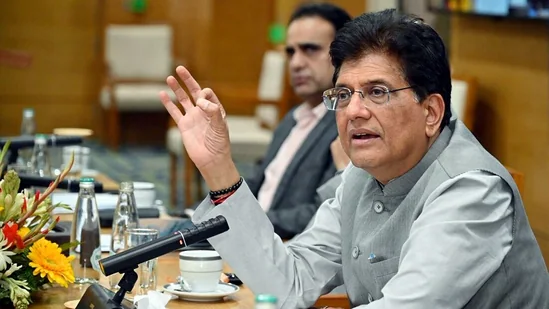India on High Alert as China Accelerates Pakistan’s Naval Expansion
- MGMMTeam

- 2 hours ago
- 4 min read
China’s growing military cooperation with Pakistan has triggered heightened vigilance in New Delhi, as India closely monitors the rapid expansion of Islamabad’s naval capabilities. From submarines to advanced frigates, Pakistan’s fleet is undergoing a dramatic transformation fueled almost entirely by Beijing’s shipbuilding support. Senior Indian naval officials have made it clear that the developments pose long-term strategic implications for stability across the Indian Ocean Region (IOR).

India’s Assessment of the China–Pakistan Naval Nexus
A Growing Challenge in the Arabian Sea
Vice Admiral Sanjay Vatsayan, Vice Chief of Naval Staff, recently underscored that India is fully aware of China’s ongoing supply of submarines and warships to Pakistan. His comments reflect the Navy’s increased concern over what is now considered the most significant enhancement of Pakistan’s maritime strength in decades. According to Vatsayan, the Indian Navy is “monitoring everything closely” and recalibrating its force structure in anticipation of the shifting naval balance.
He emphasized that the Indian Navy is developing the required anti-submarine warfare capabilities and broader maritime countermeasures to address these changes. With fifty-plus ships already under construction in Indian shipyards and plans for additional submarines, New Delhi is accelerating the modernization of its maritime assets. The Navy’s broader vision of indigenization, showcased during Swavlamban 2025, remains central to its long-term response.
Pakistan’s Submarine Surge: The Hangor-Class Program
The Rise of a New Undersea Threat
Pakistan’s most consequential naval upgrade lies beneath the surface. The China-assisted Hangor-class submarine programme represents a major leap for Islamabad’s underwater warfare capabilities. Eight diesel-electric submarines are part of this collaboration, with four being built in China and the rest assembled in Pakistan under a technology transfer agreement. This not only strengthens Pakistan’s fleet but also gives it newfound industrial experience in constructing complex undersea platforms.
Recent launches—including PNS/M Shushuk and PNS/M Mangro at Chinese shipyards—highlight the pace of cooperation. Pakistani authorities have indicated that the first submarines are expected to join the fleet by 2026, marking the entry of some of the region’s most advanced non-nuclear underwater assets. These vessels, believed to be derived from China’s Yuan-class submarines, feature air-independent propulsion systems, modern sensors, and advanced weapons, significantly enhancing stealth and endurance in contested waters.
China’s Strategic Footprint and Its Implications
Beijing’s Expanding Influence in the Indian Ocean
The China–Pakistan naval partnership is more than a bilateral defence arrangement—it is a deliberate, long-term strategic project. By supplying submarines, frigates, and technology transfer agreements, China is embedding itself deeply into Pakistan’s maritime security architecture. The deployment of Type 054A/P frigates has already strengthened Pakistan’s surface fleet, while the Hangor-class submarines are poised to reshape its undersea posture.
For China, the collaboration provides valuable leverage in the Arabian Sea, a region critical for global energy routes, commercial shipping lanes, and strategic influence. Strengthening Pakistan’s Navy also acts as a counterweight to India’s maritime presence, enabling Beijing to maintain a constant, extended footprint in waters that were once dominated by New Delhi.
India’s Strategic Response and Future Preparations
Building Strength without Escalation
India’s response to these developments has been measured but firm. The Navy is enhancing its anti-submarine warfare capabilities, expanding its fleet with new submarines and surface combatants, and accelerating indigenous shipbuilding. By focusing on modernization and self-reliance, India aims to deter any destabilizing shift in maritime power dynamics.
At the same time, naval officials acknowledge that platforms alone are not enough. Operational readiness, training, and maritime intelligence will play a decisive role in maintaining India’s advantage in the Indian Ocean. The Navy’s evolving doctrine reflects this shift, balancing strength with strategic foresight.
A Region Entering a New Maritime Era
The Onset of a Submarine Arms Competition
Pakistan’s acquisition of advanced submarines carries long-term consequences for regional security. The Arabian Sea may soon witness the most active undersea competition in South Asia’s history, as India strengthens its patrol and surveillance capabilities while Pakistan expands its deterrence. With China backing Pakistan, the strategic triangle between New Delhi, Islamabad, and Beijing becomes increasingly pronounced.
These trends signal an era where technological sophistication, stealth platforms, and electronic warfare will shape naval confrontations more than ever before. The Indian Ocean, traditionally seen as India’s sphere of influence, is evolving into a theatre of multi-layered power competition.
The MGMM Outlook
China’s accelerated militarisation of Pakistan’s Navy marks a deeply concerning shift in the Indian Ocean landscape, and from our viewpoint, it is clear that this partnership is designed to strategically encircle India. With Beijing providing submarines, frigates, and large-scale technology transfers, Pakistan’s naval strength is being rebuilt almost entirely on Chinese support. This rapid expansion—especially the Hangor-class submarines with advanced stealth and AIP systems—signals that China wants a long-term foothold in the Arabian Sea, using Pakistan as its maritime extension. India’s naval leadership is rightly alert, fully aware that this growing China–Pakistan axis isn’t just a routine defence cooperation but a calculated move to alter regional balance and undermine India’s traditional dominance in the Indian Ocean Region.
India’s response reflects maturity, confidence, and strategic preparedness. Instead of reacting with panic or provocation, the Indian Navy is advancing its own modernization, strengthening anti-submarine warfare capabilities, expanding indigenous shipbuilding, and sharpening operational readiness. The reality is that India has both the experience and the strategic depth to counter these shifts, and its naval vision—rooted in self-reliance and long-term maritime foresight—positions the country to stay ahead despite China’s attempts to reshape the region. The coming years will witness intensified underwater competition, but India’s vigilance and decisive modernisation ensure that the balance of power in the Indian Ocean will continue to reflect New Delhi’s strength and strategic clarity.
(Sources: Firstpost, Moneycontrol, NDTV)




Comments